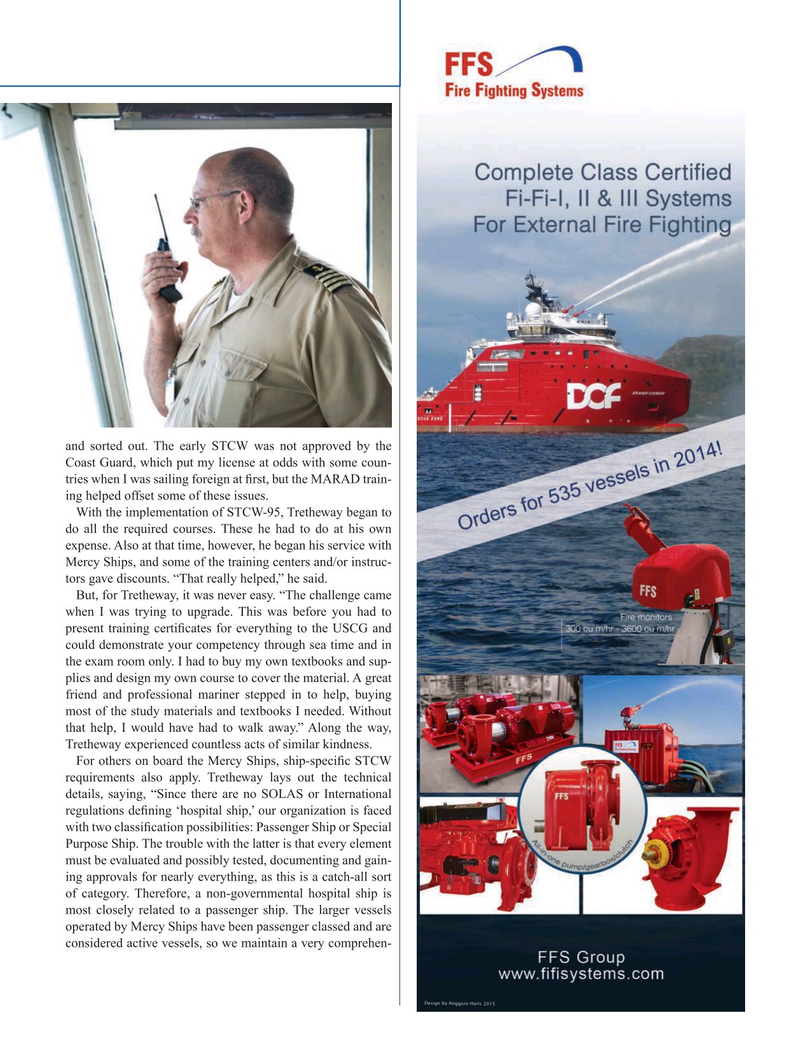
Page 21: of Maritime Logistics Professional Magazine (Q3 2015)
Read this page in Pdf, Flash or Html5 edition of Q3 2015 Maritime Logistics Professional Magazine
and sorted out. The early STCW was not approved by the
Coast Guard, which put my license at odds with some coun- tries when I was sailing foreign at ? rst, but the MARAD train- ing helped offset some of these issues.
With the implementation of STCW-95, Tretheway began to do all the required courses. These he had to do at his own expense. Also at that time, however, he began his service with
Mercy Ships, and some of the training centers and/or instruc- tors gave discounts. “That really helped,” he said.
But, for Tretheway, it was never easy. “The challenge came when I was trying to upgrade. This was before you had to present training certi? cates for everything to the USCG and could demonstrate your competency through sea time and in the exam room only. I had to buy my own textbooks and sup- plies and design my own course to cover the material. A great friend and professional mariner stepped in to help, buying most of the study materials and textbooks I needed. Without that help, I would have had to walk away.” Along the way,
Tretheway experienced countless acts of similar kindness.
For others on board the Mercy Ships, ship-speci? c STCW requirements also apply. Tretheway lays out the technical details, saying, “Since there are no SOLAS or International regulations de? ning ‘hospital ship,’ our organization is faced with two classi? cation possibilities: Passenger Ship or Special
Purpose Ship. The trouble with the latter is that every element must be evaluated and possibly tested, documenting and gain- ing approvals for nearly everything, as this is a catch-all sort of category. Therefore, a non-governmental hospital ship is most closely related to a passenger ship. The larger vessels operated by Mercy Ships have been passenger classed and are considered active vessels, so we maintain a very comprehen- 18-33 Q3 MP2015.indd 21 9/18/2015 9:40:54 AM

 20
20

 22
22
